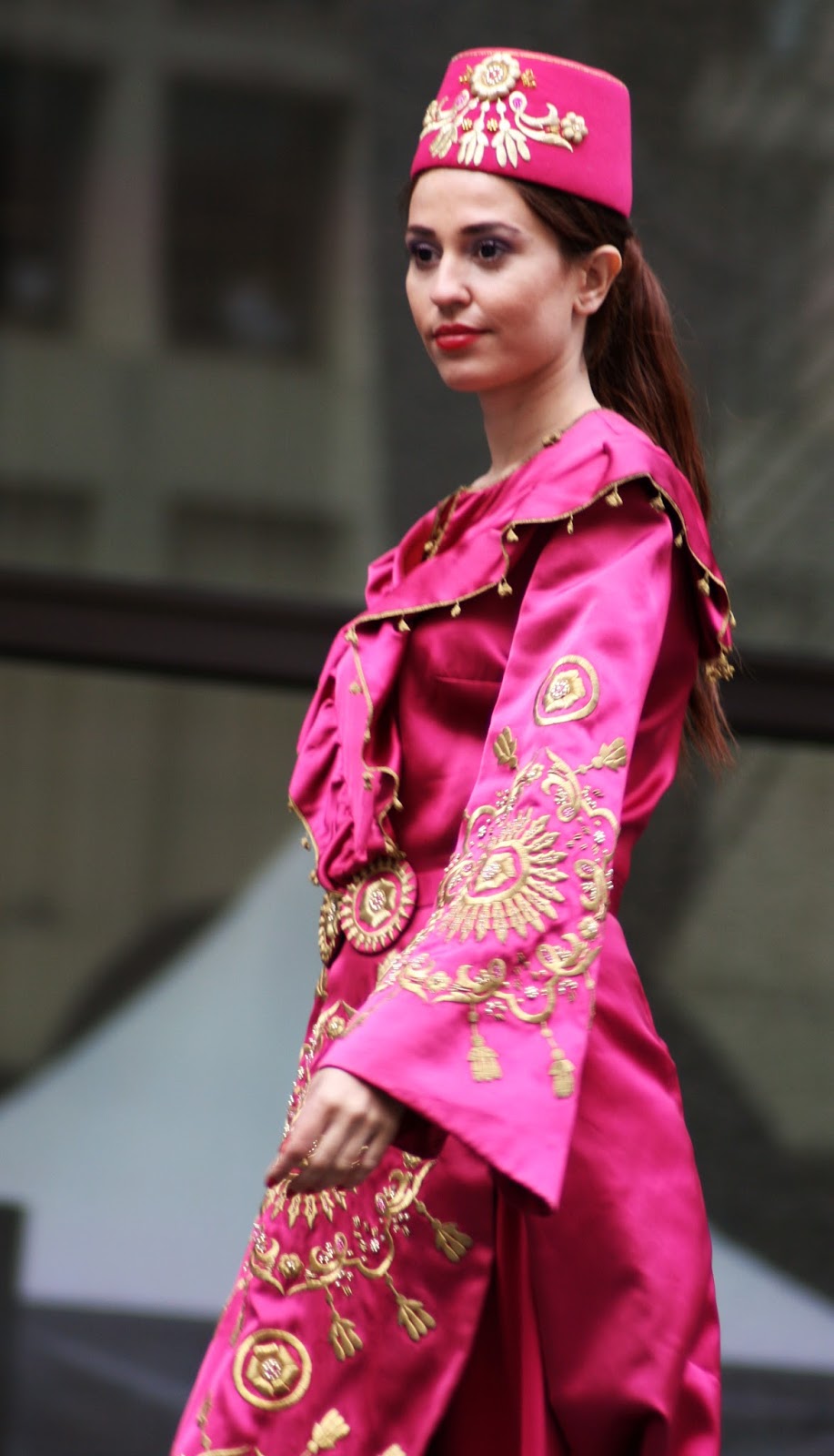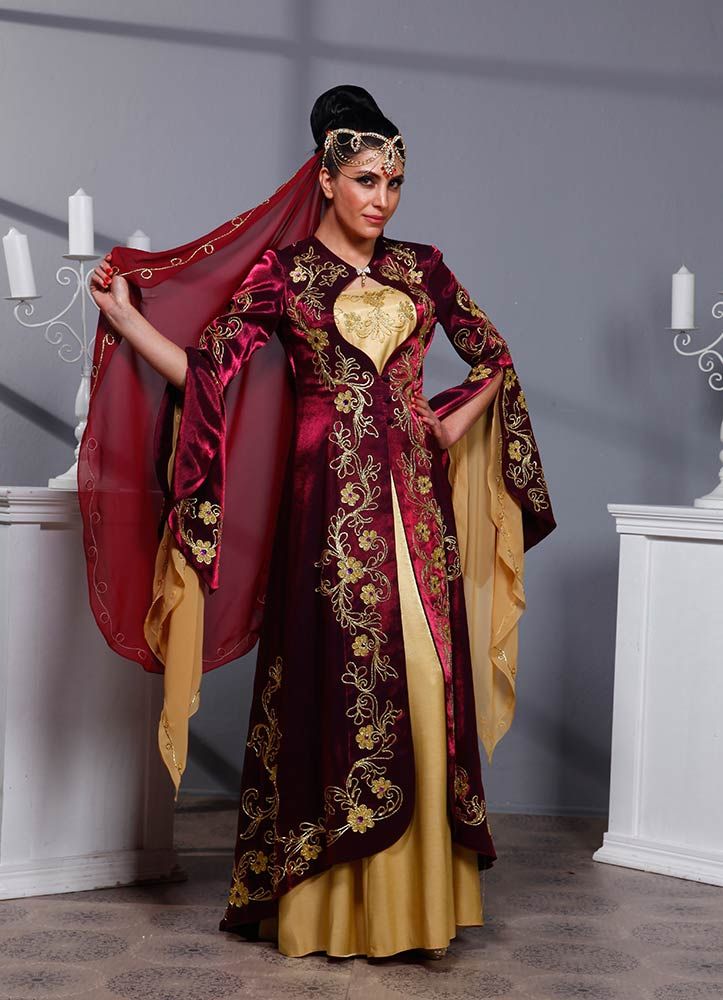
Traditional Kaftan Dress Turkish Traditional Clothes Top Models
TURKISH TRADITIONAL DRESSES. Folk costumes. Afyon (Central-Western Turkey) Amasya (Mountainous area near the Black sea) Ankara (The capital of Turkey) Aydın (Western Turkey, close to the Aegean sea) Edirne (East Thrace) Kırklareli (East Thrace)

‘Turkish Costumes’ Costume Hire Amera's Palace Belly Dance Boutique
Traditional clothes form part of Turkish traditional culture. In the past, Turk women would weave their own clothes and make dyes from natural plant ingredients, in a way that reflects their feelings in the designs they created. Today, each region has its own characteristics in clothing, head coverings, scarves, and socks

Turkish traditional fashion Turkish clothing, Beautiful costumes, Traditional fashion
The Grand Bazaar in Istanbul Turkish Textiles One great way to see the cultural distinctiveness of any nation is through its clothing and the fashions people wear. Clothing is manufactured from textiles or fabrics and cloth made from natural and/or synthetic fibers.

Traditional Turkish Costumes From Canakkale/Türkiye Arab Fashion, Turkish Fashion, Folk Clothing
Traditional Turkey Clothes Fashion of the Ottoman Sultan. The Ottoman Empire flourished in several areas during the 16th century. Weaving led to a golden age for textiles, especially silver threads. Sultans wore magnificent robes and kaftans. Palace hassa nakkaşlar designed court dress. Due to demand, Bursa and Istanbul also produced patterns.

Traditional Turkish Clothing ⋆ Sultan Dress
What is Traditional Clothing in Turkey? Discover the top 7 Turkey traditional dress 1. Salvar & Dimiye 2. Yelek 3. Kaftan 4. Bindalli 5. Fez 6. Pestemal 7. Kesan History of Turkish Traditional Clothing Facts about Turkey's national dress Get a Turkey e-visa to enjoy the culture of traditional dress in Turkey

Turkish Traditional dressTurkish fashion and tradition How to draw Croqui
Turkish şalvar (pronounced shalvar, Turkish: [ʃalˈvaɾ] ), Turkish trousers or dimiye are traditional baggy trousers gathered in tightly at the ankle. They are part of Turkish folk dress . Men may wear the traditional loose coat, called jubba, over the şalvar. Other upper garments are also worn over or under şalvar.

Turkish Folkloric Outfit Costumes around the world, Beauty around the world, World cultures
Common modern Turkish clothing items include jeans, togas, and ponchos. Jeans are a popular choice for everyday wear and can be found in a variety of colours and styles. Togas, or traditional Turkish clothing, is often worn for special occasions and is often made of brightly coloured fabrics, often with sequins or embroidery.

Turkish traditional fashion6 Turkish salvar Wikipedia Turkish clothing, Fashion, Turkish dress
Boys are fine to wear shorts and t-shirts, and girls can wear shorts and tops or sundresses in the same way that they would in western countries. Older girls or girls that look older and reaching puberty should follow the advice given for women's dress code in Turkey. Don't forget to pack hats, sunglasses and sunscreen, as the Turkish sun.

Turkish Girl Beyonce, Costumes Around The World, Turkish Women Beautiful, Versace, Saint Laurent
1. Most Popular Traditional Turkish Clothes Traditional Turkish Aegean Women Dress (My Daughter in the picture.) As imagined, there are plenty of fascinating examples of traditional clothing. Most of them are replaced by modern style clothing like jeans and T-shirts. Today, some traditional clothes like Salvar are worn in rural communities.

Fashion Is My Drug Turkish Traditional dress
Commoners maintained traditional clothing styles, while royals or wealthy folk changed their style to redingot, which consisted of a waistcoat, jacket, tie, and high-heeled shoes (Turkish Cultural Foundation). Even so, as the Ottoman Empire expanded, local clothing traditions became more fixed.

Turkey Traditional Costume ubicaciondepersonas.cdmx.gob.mx
Culture Name Turkish Orientation Identification. The English word "Turkish" comes from the ancient Turkish word Türk , which can be used as an adjective or a proper noun. In Turkish, the name of the country is Türkiye . After decades of nationalistic indoctrination, most citizens self-identify as Turks regardless of ethnic background.
.jpg)
Fashion Is My Drug Turkish Traditional dress
Traditional Turkish clothing is often brightly colored and often includes flowing long sleeves and trousers, as well as embroidered fabrics and sequins. Many traditional Turkish clothing styles are still worn today and can be seen in everyday streetwear as well as formal occasions.

Traditional Turkish Wedding Dress Fashion dresses
Other parts of the traditional clothes and Turkish national costumes are made from harem pants (Turkish salvar), shirts, waistbands, sandals (traditional Turkish shoes), traditional socks, tiny bells as accessories, etc. Kid Turkey Traditional Dress Kid Turkey traditional dresses aren't so different from the grown up's.

Turkish Traditional Ottoman Evening Henna Dresses Turkeyfamousfor
The main items of a woman's attire were baggy trousers or salwar, a jacket, a blouse, a robe called entari, and a kaftan. In today's Turkey, most Turkish brides wear a white wedding gown, but the traditional dress may be used for another part of the ceremony like the Henna Night.

TURKISH CLOTHING Folk Fashion, Ethnic Fashion, Traditional Fashion, Traditional Dresses, Crimean
Traditional fabrics are silk, velvet, and cotton. Every piece of clothing is embroidered or embellished. Different patterns of fabric are popular, but the most common are colorful stripes. Traditional festive costume from Merkez Kapıkaya köyü, Aegean region. Photo from Pinterest.com, by Jean-Marie Criel

Ottoman Red Kaftan Set Turkish Traditional Clothes Kaftan Online
What is the traditional clothing in Turkey? A Turkish salwar (Turkish: salwar: [ʃalˈvaɾ]) is a traditional Turkish trouser or dhimiye trouser that is gathered tightly at the ankles. Men may wear a traditional coat called a jhupa over the salwar. Mustafa Kemal Atatürk changed the dress code in Turkey in the 1920s within the framework of reforms.